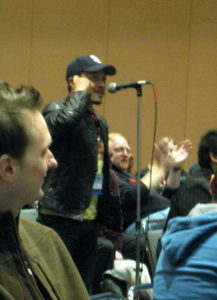But over the past two years I’ve dropped half the series I was collecting, and the others (the ones I liked) have been canceled. I’m down to one DCU series. (Again)
The New 52 DC universe no longer feels like the same DC universe I used to follow. The tone is off (though to be fair, it had been shifting ever since Identity Crisis), and it’s now just different enough to feel unfamiliar and off-putting, but not different enough to feel like another fictional world that I can enjoy on its own terms.
A few years back I came to the realization that a shared universe I knew well, like DC at the time, was a hook that would encourage me to try more comics set in that world, while one that I didn’t know so well, like Marvel, actually discouraged me from reading it. The Marvel books I read tend to be those that are either not the Marvel universe, or set off in a corner of it. Since the New 52, the same has been true of DC.
Previously posted as a comment on Reddit
